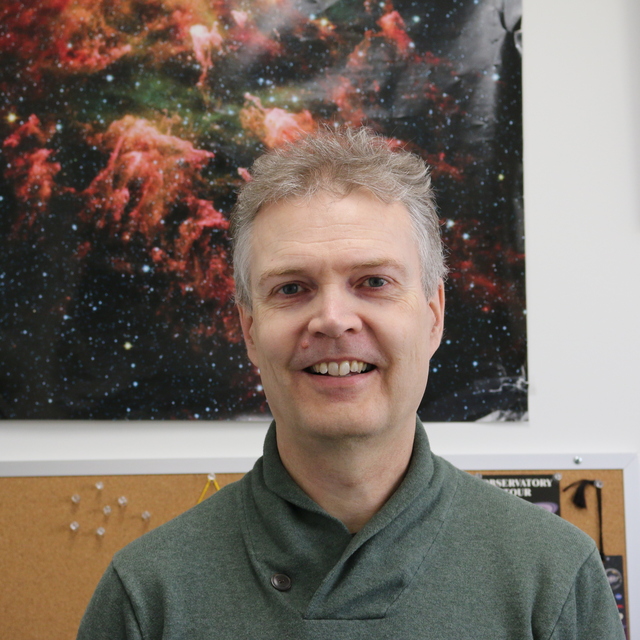October
2007
•
2007A&A...473..747L
Authors
•
Leon, S.
•
Eckart, A.
•
Laine, S.
•
Kotilainen, J. K.
•
Schinnerer, E.
•
Lee, S. -W.
•
Krips, M.
•
Reunanen, J.
•
Scharwächter, J.
Abstract
•
Aims:We study the CO and the radio continuum emission in an active galaxy to analyze the interplay between the central activity and the molecular gas.
Methods: We present new high-resolution observations of the 12CO(1-0) and 12CO(2-1) emission lines, and 3.5 cm and 20 cm radio continuum emission in the central region of the LINER/starburst galaxy NGC 6764.
Results: The galaxy has an outflow morphology in radio continuum, spatially coincident with the CO and Hα emission, and centered slightly off the radio continuum peak at the LINER nucleus. The total molecular gas mass in the center is about 7×108 M⊙, using a CO luminosity to total molecular gas conversion factor that is three times lower than the standard one. 12CO(1-0) emission is found near the boundaries of the radio continuum emission cone. The outflow has a projected expansion velocity of 25 km s-1 relative to the systemic velocity of NGC 6764. About 4× 106 M⊙ of molecular gas is detected in the outflow. The approximate location (~1 kpc) of the dynamical inner Lindblad resonance has been derived from the rotation curve. The peak of the CO emission is slightly (< 200 pc) offset from the peak of the radio continuum.
Conclusions: The molecular gas has most likely been ejected by the stellar winds from the recent starburst, but the CO line ratios show indication of an interaction with the AGN. The energy released by the nuclear starburst is sufficient to explain the observed outflow, even if the data cannot exclude the AGN from being the major energy source. Comparison of the outflow with hydrodynamical simulations suggests that the nuclear starburst is 3-7 Myr old and the bubble-like outflow is still confined and not freely expanding.
Links




